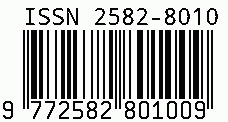
International Journal of Leading Research Publication
E-ISSN: 2582-8010
•
Impact Factor: 9.56
A Widely Indexed Open Access Peer Reviewed Multidisciplinary Monthly Scholarly International Journal
Plagiarism is checked by the leading plagiarism checker
Call for Paper
Volume 6 Issue 10
October 2025
Indexing Partners



















Review Article: Sickle Cell Anaemia in India —Epidemiological, Clinical, and Public Health Perspectives
| Author(s) | Dr Indra Pratap Singh, Dr R C Gupta, Dr Neha Singh, Dr Abhishek Singh |
|---|---|
| Country | India |
| Abstract | Sickle cell anaemia (SCA) is a genetic hemoglobinopathy caused by a point mutation (Glu6Val) in the β-globin gene on chromosome 11, leading to the substitution of valine for glutamic acid and the formation of abnormal haemoglobin S (HbS). Under hypoxic conditions, HbS polymerizes, causing red blood cells to become rigid and sickle-shaped, resulting in chronic hemolytic anaemia, vaso-occlusive crises, and multi-organ damage. In India, SCA predominantly affects tribal and some non-tribal populations across Madhya Pradesh, Chhattisgarh, Maharashtra, Odisha, Gujarat, and parts of Tamil Nadu, where carrier frequencies range from 1% to 40%, posing significant regional and genetic diversity in disease burden. The autosomal recessive inheritance pattern leads to a 25% risk of disease occurrence in offspring when both parents are carriers, highlighting the urgent need for widespread premarital and antenatal genetic screening. |
| Keywords | Sickle cell anaemia, India, epidemiology, anaemia, newborn screening, tribal health, hemoglobinopathy, public health |
| Field | Biology > Genetics / Molecular |
| Published In | Volume 6, Issue 10, October 2025 |
| Published On | 2025-10-29 |
| Cite This | Review Article: Sickle Cell Anaemia in India —Epidemiological, Clinical, and Public Health Perspectives - Dr Indra Pratap Singh, Dr R C Gupta, Dr Neha Singh, Dr Abhishek Singh - IJLRP Volume 6, Issue 10, October 2025. |
Share this


CrossRef DOI is assigned to each research paper published in our journal.
IJLRP DOI prefix is
10.70528/IJLRP
Downloads
All research papers published on this website are licensed under Creative Commons Attribution-ShareAlike 4.0 International License, and all rights belong to their respective authors/researchers.

